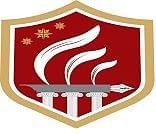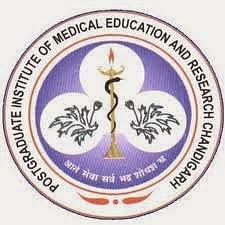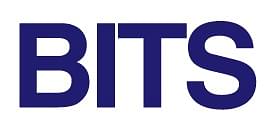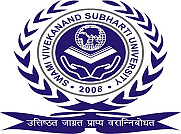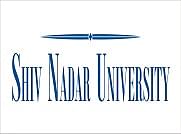Introduction about Master of Fine Arts (MFA)
The Master of Fine Arts (MFA) from the top university is an
advanced degree that focuses on the development of creative skills and artistic
expression in various disciplines such as visual arts, creative writing , film,
dance, and music. Unlike some other postgraduate degrees that may have a more
academic or research-oriented approach, the MFA is typically a terminal degree
designed to provide intensive, studio-based instruction and foster the artistic
growth of students.
Here's an introduction to the MFA degree:
1.
Focus on Creativity: The MFA program
emphasizes the cultivation and refinement of creative skills and artistic
vision. Students are encouraged to explore their chosen medium deeply and
develop a distinctive artistic voice.
2.
Studio-Based Learning: MFA programs often
feature a studio-based learning environment where students engage in hands-on
practice, experimentation, and critique. This allows for the development of
technical proficiency and artistic experimentation.
3.
Interdisciplinary Opportunities: Many MFA
programs encourage interdisciplinary collaboration, allowing students to
explore connections between different art forms and disciplines. This fosters
innovation and expands artistic horizons.
4.
Individualized Instruction: MFA
programs typically offer close mentorship and individualized instruction from
faculty members who are accomplished artists in their own right. This
personalized attention helps students develop their artistic practice and
navigate their creative journey.
5.
Creative Community: MFA programs often foster
a vibrant and supportive creative community where students can collaborate,
exchange ideas, and receive feedback from peers. This sense of community can be
invaluable in nurturing artistic growth and fostering a network of professional
contacts.
6.
Exhibition or Publication Opportunities: Many MFA
programs culminate in a final thesis project, exhibition, or publication that
showcases students' creative work. These opportunities allow students to
publicly present their artistic achievements and prepare for careers in the
arts.
7.
Career Preparation: While the primary focus
of the MFA is on artistic development, many programs also provide professional
development opportunities and career guidance to help students transition into
careers as practicing artists, educators, curators, or arts administrators.
Overall, the Master of Fine Arts is a rigorous and immersive program
designed to nurture the artistic talents and creative potential of students,
preparing them for careers in the arts or further study at the highest level of
artistic practice.
What is eligibility for Master of Fine Arts (MFA)?
Eligibility criteria for Master of Fine Arts (MFA) at the best university programs can vary depending on the institution offering the
program and the specific discipline within the fine arts. However, here are
some common eligibility requirements you might encounter:
§ Bachelor's Degree: Most MFA
programs require applicants to have a bachelor's degree from an accredited
institution. The degree may need to be in a relevant field, such as fine arts,
visual arts, performing arts, creative writing, or a related discipline.
§ Portfolio or Sample
Work: Applicants are often required to submit a portfolio of their creative
work as part of the application process. This portfolio typically showcases
examples of the applicant's artistic abilities and may include drawings,
paintings, sculptures, photographs, writing samples, videos, or other relevant
works.
§ Letters of
Recommendation: MFA programs typically require letters of recommendation from
individuals who can speak to the applicant's artistic talent, creativity, work
ethic, and potential for success in the program. These letters are usually
written by professors, mentors, or professionals in the field.
§ Statement of
Purpose or Artist's Statement: Applicants may need to submit a written
statement outlining their artistic interests, goals, influences, and reasons
for pursuing an MFA degree. This statement helps admissions committees assess
the applicant's fit for the program and commitment to their artistic practice.
§ GRE Scores
(optional): While some MFA programs may require Graduate Record Examination (GRE)
scores as part of the application process, others do not. Be sure to check the
specific requirements of the programs you're interested in.
§ Interview or
Audition (optional): Some MFA programs may require applicants to
participate in an interview, audition, or portfolio review as part of the
admissions process. This allows faculty to assess the applicant's artistic
abilities, potential, and fit for the program.
What is admission process for Master of Fine Arts
(MFA) ?
The admission process for a Master of Fine Arts (MFA) program typically
involves several steps, which may vary slightly depending on the institution
and the specific discipline within the fine arts. Here's a general overview of
the typical admission process:
§ Research and
Preparation: Before applying to MFA programs, research different institutions and
their MFA offerings to find programs that align with your artistic interests,
career goals, and personal preferences. Consider factors such as faculty
expertise, facilities, curriculum, location, and reputation.
§ Application
Submission: Begin the application process by submitting an application form
through the institution's admissions website. Be sure to review the application
deadlines and requirements carefully, as they can vary from program to program.
§ Transcripts: Request
official transcripts from all undergraduate institutions you have attended.
These transcripts should be sent directly to the admissions office of the MFA
program to which you are applying.
§ Portfolio
Submission: Prepare a portfolio of your creative work to submit as part of your
application. The portfolio should showcase your artistic abilities, creativity,
and potential for growth. Follow the specific guidelines provided by each
program regarding portfolio format, content, and submission instructions.
§ Letters of
Recommendation: Request letters of recommendation from individuals who can speak to
your artistic talent, creativity, work ethic, and potential for success in an
MFA program. These individuals may include professors, mentors, supervisors, or
other professionals in the arts.
§ Statement of
Purpose or Artist's Statement: Write a statement of purpose or artist's
statement that outlines your artistic interests, goals, influences, and reasons
for pursuing an MFA degree. This statement should provide insights into your
artistic practice, aspirations, and what you hope to achieve through graduate
study.
§ GRE Scores (if
required): If the MFA program requires Graduate Record Examination (GRE) scores,
register for the exam and have your scores sent directly to the institution. Be
sure to check the specific requirements of each program regarding standardized
testing.
§ Interview or
Audition (if required): Some MFA programs may require applicants to
participate in an interview, audition, or portfolio review as part of the
admissions process. If applicable, prepare for these components and be ready to
discuss your artistic work and aspirations with faculty members.
§ Admission Decision: After
submitting your application materials, the admissions committee will review
your portfolio, transcripts, letters of recommendation, statement of purpose,
and any other required documents. You will receive an admission decision from
the institution within a specified timeframe.
§ Enrollment and
Registration: If accepted, you will receive instructions on how to enroll in the MFA
program and register for classes. Be sure to complete any additional
requirements, such as submitting a tuition deposit or attending orientation
sessions, as specified by the institution.
§ Financial Aid and
Scholarships: Explore financial aid options, scholarships, grants, and
assistantships available to MFA students. Submit any required financial aid
applications and documents by the specified deadlines to be considered for
funding opportunities.
It's important to start the application process early, gather all
required materials, and carefully follow the instructions provided by each MFA
program to which you are applying. Good luck!
What is syllabus for Master of Fine Arts (MFA)?
The syllabus for a Master of Fine Arts (MFA) at the top affordable university program can vary significantly depending on the institution
offering the program, the specific discipline within the fine arts, and the
focus areas of in dividual faculty members. However, here's a general overview
of the types of courses and topics you might encounter in an MFA program:
§ Studio Courses: The core
of many MFA programs is studio-based coursework, where students engage in
hands-on practice and artistic exploration in their chosen medium or discipline.
Studio courses may focus on techniques, materials, conceptual development, and
experimentation.
§ Critique and
Feedback: MFA programs often include critique sessions where students present
their work to faculty and peers for feedback and discussion. These sessions
provide opportunities for constructive criticism, dialogue, and the refinement
of artistic ideas.
§ Art History and
Theory: MFA students typically study art history and theory to gain a deeper
understanding of the historical context, theoretical frameworks, and critical
perspectives that inform artistic practice. Courses may cover various art
movements, critical theory, and contemporary debates in the field.
§ Professional
Practices: Many MFA programs offer courses or workshops focused on professional
practices and career development for artists. Topics may include portfolio
development, exhibition strategies, grant writing, artist statements,
networking, and entrepreneurship in the arts.
§ Interdisciplinary
Studies: Some MFA programs encourage interdisciplinary exploration and
collaboration across different art forms and disciplines. Courses may explore
intersections between visual arts, performing arts, literature, music, film,
and other creative fields.
§ Thesis or Final
Project: MFA programs often culminate in a thesis project, final exhibition,
performance, or publication that showcases students' artistic achievements and
demonstrates their mastery of their chosen medium or discipline. Students
typically work closely with faculty advisors to develop and execute their
thesis projects.
§ Electives and
Special Topics: MFA students may have the opportunity to take elective courses or
pursue special topics of interest within their discipline or across
disciplines. These courses allow students to tailor their education to their
individual interests and goals.
§ Seminar Series and
Guest Lectures: Many MFA programs offer seminar series, guest lectures, artist talks,
and visiting artist programs that expose students to a diverse range of
perspectives, practices, and voices in the contemporary art world.
§ Research and
Writing: MFA students may engage in research and writing projects related to
their artistic practice, theoretical interests, or critical inquiries. This may
involve writing artist statements, research papers, exhibition catalogs, or
other scholarly works.
§ Exhibitions,
Performances, and Events: MFA programs often host exhibitions,
performances, screenings, readings, and other events where students can
showcase their work to the public and engage with the broader community.
Keep in mind that the specific syllabus and course offerings of an MFA
program can vary from one institution to another, so it's important to research
the curriculum of individual programs to find one that aligns with your artistic
interests and goals.
What are scopes after Master of Fine Arts (MFA)?
After completing a Master of Fine Arts (MFA) degree, graduates have a
variety of career opportunities available to them in the fields of art, design,
education, and more. Here are some potential career paths and scopes for MFA
graduates:
§ Practicing Artist: Many MFA
graduates pursue careers as practicing artists, creating and exhibiting their
artwork in galleries, museums, art fairs, and other venues. They may work in
various mediums such as painting, sculpture, photography, printmaking,
ceramics, video, installation, performance, or digital art.
§ Arts Administration: MFA
graduates can work in arts administration roles within galleries, museums,
cultural institutions, arts organizations, and nonprofit agencies. They may be
involved in curating exhibitions, managing collections, coordinating events,
fundraising, marketing, education programming, or gallery management.
§ Teaching and
Education: Some MFA graduates pursue careers in teaching and education, working
as professors, lecturers, or instructors at colleges, universities, art
schools, community colleges, or K-12 schools. They may teach studio art, art
history, design, or related subjects and mentor aspiring artists.
§ Art Therapy: MFA
graduates with an interest in psychology and counseling may pursue careers in
art therapy, using art as a therapeutic tool to help individuals express
themselves, process emotions, and achieve personal growth. They may work in
hospitals, clinics, schools, rehabilitation centers, or private practice
settings.
§ Design and Creative
Industries: MFA graduates with skills in design, illustration, typography, or
digital media may work in the design industry, advertising agencies, publishing
houses, animation studios, film production companies, game development studios,
or branding firms.
§ Freelance and
Entrepreneurship: MFA graduates may choose to work as freelance
artists, designers, writers, or consultants, offering their services to clients
on a project basis. They may also start their own businesses, studios,
galleries, or creative ventures.
§ Art Criticism and
Writing: MFA graduates with strong writing skills and critical thinking
abilities may pursue careers as art critics, journalists, bloggers, or editors,
writing about art, culture, and creativity for publications, websites, or
online platforms.
§ Residencies and
Fellowships: MFA graduates may apply for artist residencies, fellowships, grants,
or scholarships to further develop their artistic practice, collaborate with
other artists, access studio space and resources, or exhibit their work in new
contexts.
§ Research and
Academia: Some MFA graduates may pursue research-oriented careers in academia,
working as researchers, scholars, or critics in the fields of art history,
visual studies, cultural studies, or related disciplines. They may conduct
academic research, publish scholarly articles or books, and contribute to the
advancement of knowledge in the arts.
§ Community
Engagement and Social Practice: MFA graduates may engage in community-based
art projects, social practice initiatives, or public art installations that
address social issues, promote dialogue, and foster community connections.
These are just a few examples of the diverse career paths available to MFA graduates. The scope of opportunities is broad, and individuals can tailor their careers to their interests, skills, and aspirations within the dynamic and evolving field of the arts.
About us : Universityfindo provides you a platform where you fulfill your dreams and takes a step forward towards in your life . We provide you all courses with affordable fees and safe environment . For more information contact us on our website : universityfindo.com .





